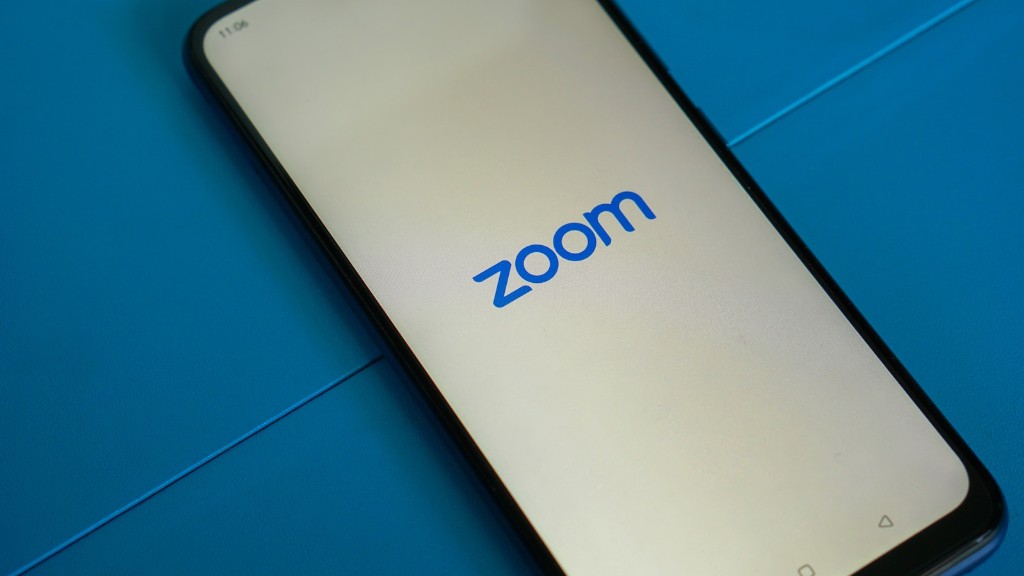A marketing communications strategy is a plan that helps a business or organization determine the best ways to reach their target audiences with their marketing messages. The strategies considers what channels of communication will be most effective, what message will resonate most with the target audience, and what timing will work best to reach the goals.
Marketing communications strategy is the process of planning, creating, and executing a plan to reach and engage your target audience. The goal of marketing communications is to persuade your target audience to take a desired action, such as purchase your product or use your service.
To develop an effective marketing communications strategy, you must first understand your audience, what drives their behavior, and what their needs and wants are. Once you have a good understanding of your audience, you can then develop messaging that will resonate with them and encourage them to take the desired action.
Your marketing communications strategy should be aligned with your overall business goals and objectives. It should also take into account your budget, your target audience, and the channels that will reach them most effectively.
Developing an effective marketing communications strategy is essential to the success of your business. By taking the time to understand your audience and craft messaging that speaks to them, you can increase the likelihood of achieving your business goals.
What are examples of marketing communication strategies?
1. Brand your way to success: In the market, you can either become a commodity or a brand. If you want to be successful, you need to brand yourself. A good logo and creative positioning can help you stand out from the competition and build a strong brand.
2. Pay attention to creativity: Advertising, blogging, sponsoring, and corporate events are all great ways to get your brand noticed. But if you really want to stand out, you need to be creative. Think outside the box and come up with some truly unique marketing ideas.
3. Positioning: Positioning is key in the market. You need to find a niche where you can excel. Once you’ve found your niche, you need to communicate your unique selling points to the world.
4. Advertising: Advertising is a great way to get your brand noticed. But you need to be careful not to overdo it. Find the right balance between online and offline advertising, and make sure your ads are targeted and relevant.
5. Blogging: Blogging is a great way to build brand awareness and connect with your target audience. But you need to make sure your blog posts are interesting and informative.
6. Sponsoring: Sponsoring can
The 4Ps of marketing are product, price, place, and promotion. They are an example of the marketing mix, or the combined tools and methodologies used by marketers to achieve their marketing objectives. The 4Ps are interrelated and should be considered together when developing marketing strategies.
Product: The product is the first P and refers to the offering that the company makes to the customer. It can be a physical product or a service.
Price: The price is the second P and refers to the amount that the customer pays for the product.
Place: The place is the third P and refers to the location where the product is sold.
Promotion: The promotion is the fourth P and refers to the methods used to market and sell the product.
What are the 4 types of marketing communication options
There are six major modes of communication in marketing, and each has its own strengths and weaknesses.
Advertising is a broad category that includes any form of paid communication, from TV and radio ads to online banner ads. It can be very effective in reaching a large audience, but it can also be expensive, and it can be difficult to track results.
Digital marketing includes any form of marketing that uses electronic devices, such as smartphones, computers, or tablets. It can be very effective in reaching a target audience, and it can be relatively inexpensive. However, it can be difficult to track results, and there is always the risk of the message being lost in the noise of the internet.
Direct marketing involves sending a marketing message directly to potential customers, usually through mail, email, or telemarketing. It can be very effective in reaching a target audience, but it can also be very intrusive and may turn potential customers off.
Personal selling is when a salesperson speaks to a potential customer in person, either in person or through video conferencing. It can be very effective in building relationships and trust, but it can also be time-consuming.
Public relations is when an organization tries to build relationships with the public,
Marketing communication is a vital part of marketing because it helps move products, services, and ideas from manufacturers to end users and builds and maintains relationships with customers, prospects, and other important stakeholders in the company. Communication is key to marketing because it allows everyone to be on the same page and understand the company’s goals.
What are the 7 types of communication strategies?
There are seven communication strategies that any business or firm can use:
1. Understand the Full Spectrum of Communication Skills
2. Talk in Person
3. Encourage Participation in Speaking-Focused Organizations
4. Focus on Listening
5. Ask Open-Ended Questions
6. Pay Attention to Body Language and Tone of Voice
7. Use Technology to Your Advantage
The first step to any successful marketing communications strategy is to identify your target market. This can be done by segmenting your customer base by factors such as age, gender, location, or interests. Once you have identified your target market, you can then begin to identify your target customers. These are the individuals or businesses that are most likely to purchase your product or use your service.
Once you have identified your target customers, you need to identify your unique selling proposition. This is what sets your product or service apart from your competitors. It is important to match your audience problems to your product solutions. This will help you to better target your marketing communications to those who are most likely to need or want your product.
After you have set your goals, you need to identify a way to measure them. This can be done through surveys, customer feedback, or sales data. By measuring your success, you can adjust your marketing communications strategy as needed to ensure that you are achieving your desired results.
What is the most successful marketing strategy?
SEO is the most effective marketing strategy for small business for a number of reasons:
1. It’s the foundation of all your other online marketing efforts. All your other marketing efforts, such as social media marketing, pay-per-click advertising, and content marketing, will be more effective if your website is optimized for search engines.
2. It’s the best way to ensure that your website is visible to your target audience. If your website is not optimized for search engines, it will be very difficult for people to find it.
3. It’s a very cost-effective way to market your business. SEO is a long-term marketing strategy, and it is much more cost-effective than paid advertising.
4. It’s a great way to build brand awareness. If your website is optimized for search engines, people will see your brand name more often, and this will increase brand awareness.
5. It’s a great way to generate leads and sales. If people can easily find your website, they are more likely to visit it and make a purchase.
The cost domination strategy involves setting a low price for a product or service in order to gain market share. The differentiation strategy is to offer a unique product or service that cannot be easily replicated by competitors. The focus strategy is to target a specific niche market with a specialized product or service.
What are the 7 Principles of marketing strategy
Marketing is the activity, set of institutions, and processes for creating, communicating, delivering, and exchanging offerings that have value for customers, clients, partners, and society at large.
The 7 key marketing principles are:
1. Product: Developing the right product for the target market.
2. Price: Charging the right price for the product.
3. Place: Making the product available in the right place.
4. Promotion: Using the right mix of promotion activities to reach the target market.
5. People: Focusing on the right people to buy the product.
6. Process (or Positioning): Creating the right process for marketing the product.
7. Physical Evidence (or Packaging): Creating the right physical evidence to support the marketing of the product.
When it comes to effective communication, the three Cs are key: clear, concise, and consistent.
First and foremost, your message should be clear. This means avoiding ambiguity and being as specific as possible. If you can, provide concrete examples to illustrate your point.
Second, your message should be concise. This doesn’t mean being brief for the sake of being brief; rather, it means being efficient in your use of words. Every word should serve a purpose.
Finally, your message should be consistent. This means being consistent in both your words and your actions. Inconsistency can breed distrust and confusion, so it’s important to be mindful of the message you’re sending with both your words and your deeds.
Keep these three Cs in mind the next time you need to communicate something important, and you’ll be on your way to more effective communication.
What are the 4 C’s of marketing communication?
The 4 C’s of marketing are customer, cost, convenience, and communication. These are the four essential elements that every marketing strategy must consider. By definition, marketing is the process of creating value for a company through the creation and distribution of products or services. In order to be successful, marketing efforts must be focused on the needs and wants of the customer. Additionally, marketing strategies must be cost-effective and convenient for the consumer. Finally, effective communication is essential to ensuring that the customer is aware of the product or service and its benefits.
The eight elements of marketing communication play an important role in promoting a product or service. Each element has its own unique purpose and can be used to reach different audiences.
Advertising is one of the most common and well-known elements of marketing communication. It can be used to reach a wide audience and can be very effective in delivering a message.
Sales promotion is another common element of marketing communication. It is often used to incentive customers to purchase a product or service. Events and experiences (sponsorship) can also be used to reach a wide audience and create positive associations with a brand.
Public relations and publicity are often used to generate positive media coverage for a company or product. This can be a very effective way to reach potential customers and create a favorable image for a company.
Direct marketing is a more targeted form of marketing communication that can be very effective in reaching a specific audience. Interactive marketing is a newer form of marketing communication that uses interactive elements such as websites and social media to reach and engage customers.
Word-of-mouth marketing is another powerful form of marketing communication. Personal selling is also a very effective form of marketing communication that can be used to reach a specific audience and build relationships with potential customers.
What is the best marketing communication strategy
Product Positioning- Clarity is key:
It is essential that your target audience understands what your product is and what it can do for them. Positioning your product in a clear and concise way will go a long way in ensuring that your marketing communication is effective.
Efficient Advertisement Pitch:
Your advertisement pitch should be clear, concise, and to the point. You want to make sure that your target audience understands your product and what it can do for them.
Blog -Enable People to Talk about Your Product:
Blogging is a great way to get people talking about your product. By enabling people to share their thoughts and experiences with your product, you can create a buzz around it that will attract more attention.
Corporate Events and Social activities- Enhance your Company Image:
Hosting corporate events and social activities is a great way to enhance your company image. These events can help build relationships with potential customers and create a positive impression of your business.
By following these six marketing communication strategies, you can ensure that your marketing efforts are efficient and effective.
A marketing plan is a roadmap that outlines the target markets a company plans to penetrate based on favorable economic trends. The communications plan is the vehicle that delivers the product or service story to customers and other stakeholders through social media, byline editorials, speaking opportunities or other activities.
What are the three main objectives of marketing communication?
The three primary directives of marketing communications are to communicate, compete, and convince. The primary purpose of marketing communications is to communicate ideas to target audiences. Marketing communications can be used to promote a product, service, or company, and to build relationships with customers, prospects, and other stakeholders.
1. Keep it real: When delivering your message, be truthful and as complete as possible.
2. Be timely: Don’t wait until you have all the information to deliver a message.
3. Focus on consistency: Tailor your message so that it is consistent with the organization’s values and culture.
4. Reinforce it: Encourage feedback from employees and managers to ensure that the message is being received and understood.
5. Empower your managers: Encourage managers to act as communication champions within their teams.
6. Use technology: Use technology to your advantage by using tools such as video conferencing and instant messaging to reach your employees.
7. Be flexible: Be open to adjusting your communication strategies as you learn what works best for your organization.
What are 10 communication strategies
Communication is key in any relationship, whether it be personal or professional. Learning to communicate effectively can help you build better relationships, achieve your goals, and resolve conflict. Here are 10 tips to help you learn to communicate more effectively:
1. Find your voice. Literally. Stand up straight, head up, and speak with confidence. Your voice is a powerful tool, use it to your advantage.
2. Avoid filler words. Ummm, like, totally, right? Filler words can make you sound uncertain and unconfident. Be mindful of your words and try to use fewer filler words.
3. Consider your body language. Are you making eye contact? Are you crossing your arms? Body language can be just as important as verbal communication.
4. Use “I” statements. For example, “I feel disrespected when you talk to me like that.” This will help avoid sounding accusatory.
5. Practice active listening. This means really paying attention to what the other person is saying, not just waiting for your turn to talk. Try to restate what they said to ensure you understand.
6. Pay attention to facial expressions. Is the person’s body language matching their words? Are
When developing any sort of communication, it is important to first consider who your target audience is. What is their context? What are the intended outcomes of your communication? And what are the key messages you want to communicate?
Narrowing in on your target audience and understanding their context is critical in developing an effective communication strategy. You need to consider what will resonate with them and what will ultimately achieve the desired outcome. Once you have a clear understanding of your target audience, you can then develop key messages that will resonate with them and achieve the desired effect.
Warp Up
A marketing communications strategy is a plan that outlines how an organization will deliver messages to its target audience. The strategy should take into account the organization’s overall business goals and objectives, as well as its budget. Creating a detailed plan will help ensure that the organization’s marketing communications efforts are effective and efficient.
The most important thing to remember when developing a marketing communications strategy is to keep your target audience in mind. Every element of your strategy should be designed to reach and engage your target consumers. By clearly defining your target audience and tailor your message and delivery methods to them, you can develop an effective marketing communications strategy that will help your business achieve its goals.





